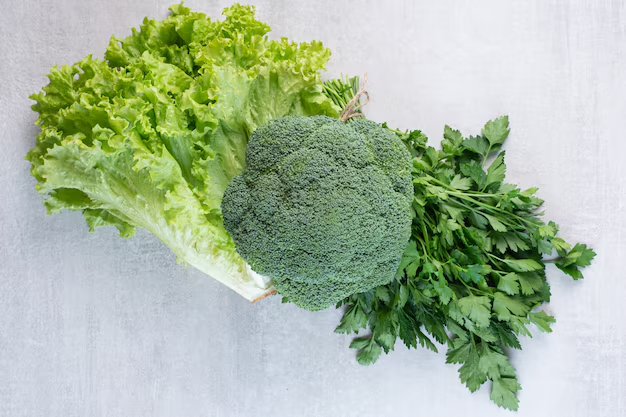Keeping Your Broccoli Fresh: A Complete Guide to Storing Broccoli in the Refrigerator
Broccoli stands out as a nutritional powerhouse, packed with vitamins, minerals, and antioxidants. So, when you bring home this vibrant green vegetable, you’ll want to ensure it stays fresh and crunchy for as long as possible. Storing broccoli correctly can extend its shelf life, maximize its nutritional value, and reduce unnecessary waste. Here's a comprehensive guide to keeping your broccoli in top condition in the refrigerator.
🥦 Why is Proper Storage Important?
Proper storage of broccoli is crucial for maintaining its nutritional quality and taste. Broccoli's delicate florets can quickly turn limp and unappetizing if not stored correctly. Additionally, improper storage can lead to food waste, which is not only impactful on your grocery bill but also the environment.
📊 The Basics of Broccoli Storage
Temperature Matters: Broccoli is best stored at a temperature slightly above freezing, typically around 32°F to 36°F (0°C to 2°C). This helps slow the respiration rate of broccoli, keeping it crisp and fresh.
Humidity Levels: Broccoli prefers high-humidity environments. The crisper drawer in your refrigerator is an optimal place because it maintains a humid environment.
Air Circulation: While it's important to maintain humidity, broccoli also needs air circulation to prevent moisture buildup, which can lead to rot.
Step-by-Step Guide: How to Store Broccoli in the Refrigerator
1. Choose Fresh Broccoli
- Select Wisely: When buying broccoli, look for heads that are deep green and firm. Avoid any that show signs of yellowing or have a strong, unpleasant odor.
- Check the Stems: The stems should be firm and intact. These are good indicators of freshness.
2. Preparation Before Refrigeration
- Do Not Wash: It's best to avoid washing broccoli before storing it. Excess moisture can promote mold growth.
- Trim the Stem: If any leaves are attached, remove them and trim the stem slightly. This can prevent moisture loss through the cut ends.
3. Best Method for Storing Broccoli
- Perforated Plastic Bags: Place the broccoli in a perforated plastic bag to allow air circulation. This helps maintain the right balance of moisture without trapping excess humidity.
- Alternative Paper Method: Wrap the broccoli loosely in a damp paper towel, then place it in a breathable bag. The towel provides moisture while the bag offers airflow.
4. Utilize the Crisper Drawer
- Maintain Separation: Store broccoli in the crisper drawer, ideally separate from fruits like apples or bananas, which emit ethylene gas and can accelerate spoilage.
- Monitor Temperature: Keep the drawer set to a high humidity setting.
⏳ How Long Can Broccoli Be Stored?
Under optimal conditions, broccoli can stay fresh in the refrigerator for up to 7-10 days. Regularly check its appearance and texture, discarding any parts that start to become overly soft or show mold.
🥗 Creative Uses for Broccoli
If you find your broccoli nearing the end of its shelf life, there are plenty of creative and delicious ways to use it up:
- Broccoli Soup: A creamy, comforting option that can be frozen for later use.
- Stir-fry: Quickly sauté broccoli with other vegetables and your choice of protein for a quick meal.
- Broccoli Slaw: Turn broccoli stalks and florets into a crunchy slaw for a nutrient-packed salad.
✨ Summary Tips: Keeping Your Broccoli Fresh
Here's a handy list to keep your broccoli fresh for as long as possible:
- 🥦 Select Fresh: Choose firm, vibrant green broccoli.
- 🥶 Cold Storage: Store in the refrigerator between 32°F to 36°F.
- 💧 High Humidity: Use the crisper drawer for a humid environment.
- 🌬️ Air Flow: Use perforated bags for circulation.
- ❌ Avoid Ethylene: Keep away from fruits that emit ethylene gas.
👩🍳 Related Topics: Enhancing Your Food Storage Skills
Understanding how to store broccoli is just one part of mastering your refrigerator's storage capabilities. Expanding your food storage skills can ensure all your produce stays fresher for longer. Consider exploring topics like:
- Proper Storage for Leafy Greens: Learn how to keep your greens from wilting.
- Maximizing Fridge Organization: Discover tips on organizing your fridge for optimal airflow and freshness.
- Extending the Shelf Life of Various Vegetables: Techniques to ensure your vegetable haul lasts week to week.
With these insights, keeping your broccoli — and other produce — in optimal condition becomes a more manageable task. By adopting these strategies, you'll not only enjoy your vegetables at their best but also contribute to reducing food waste. Happy storing!
